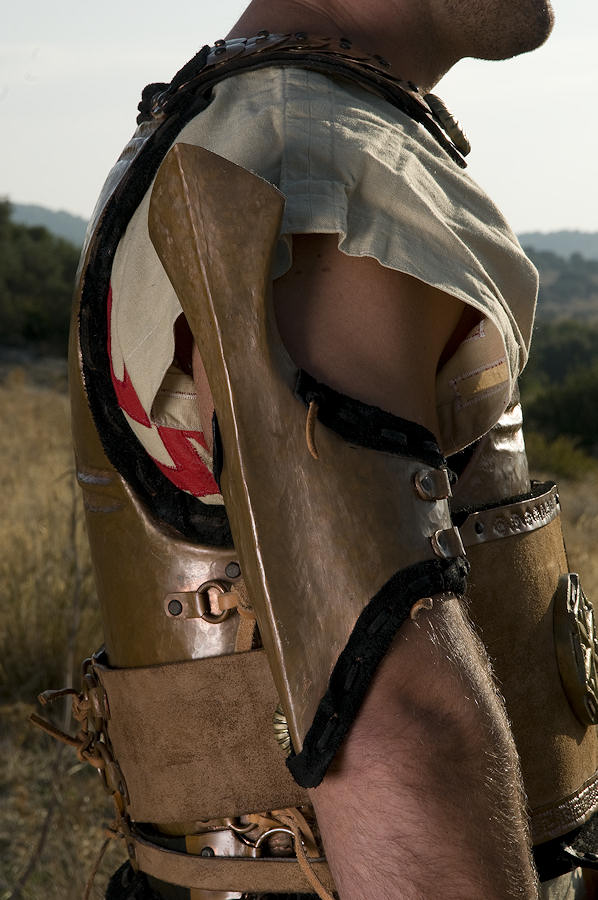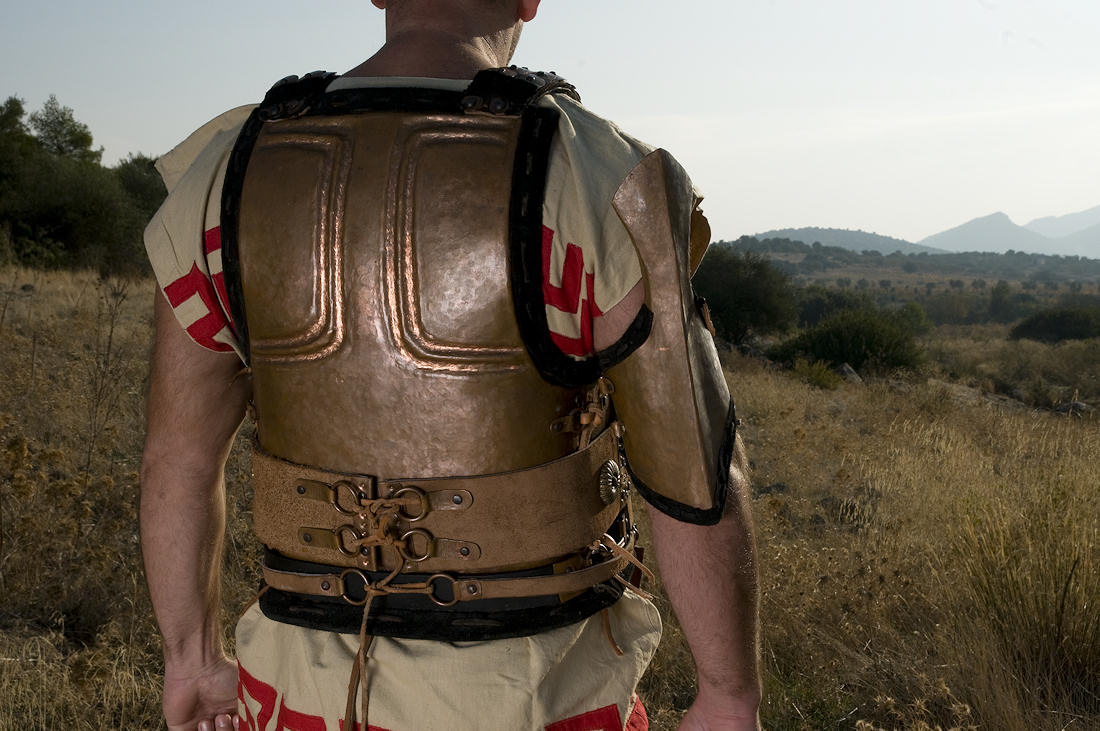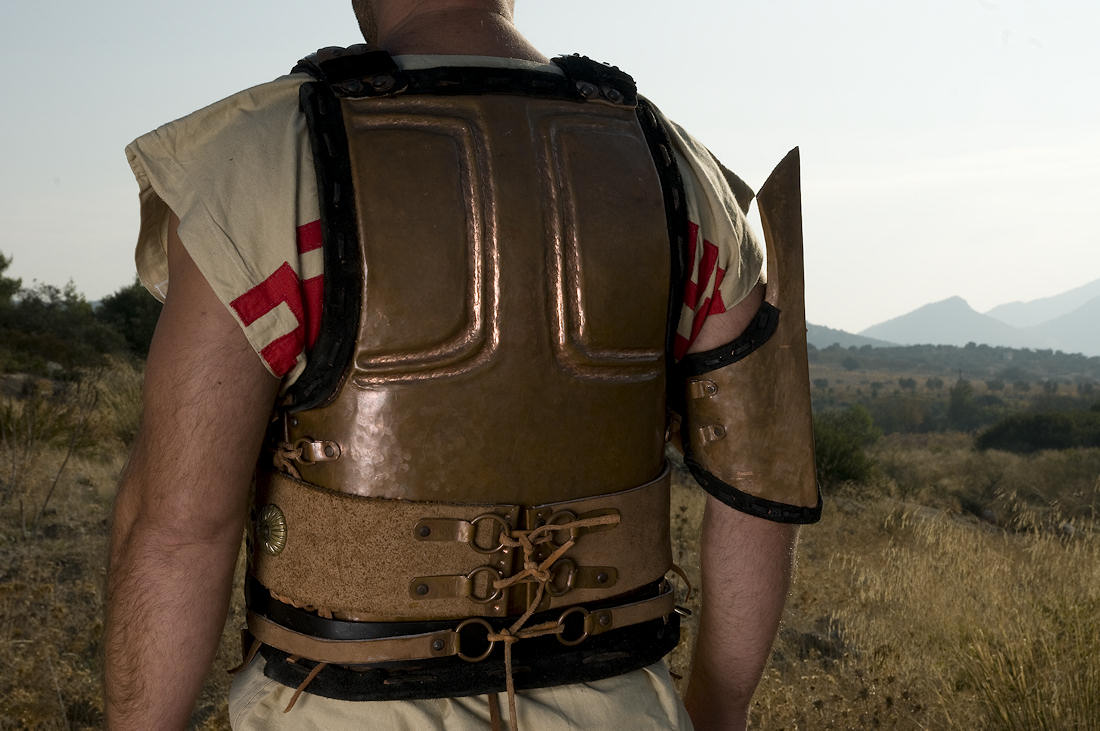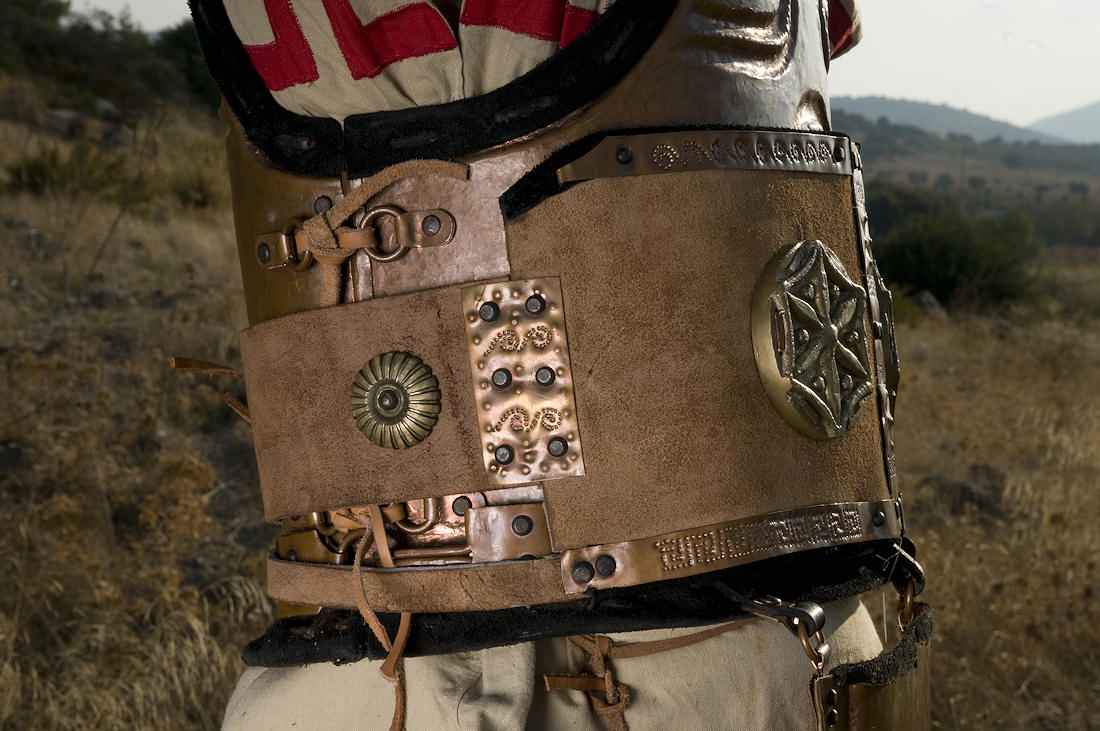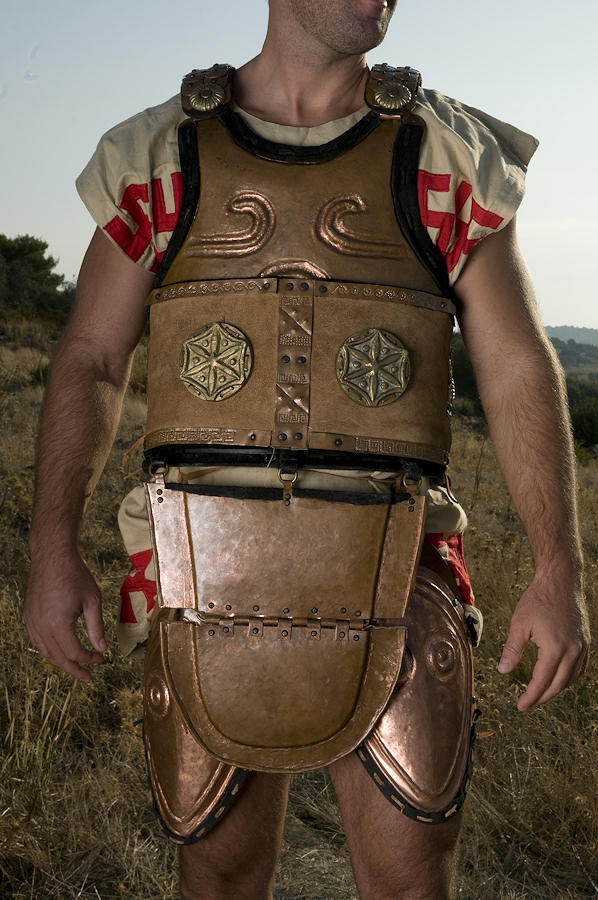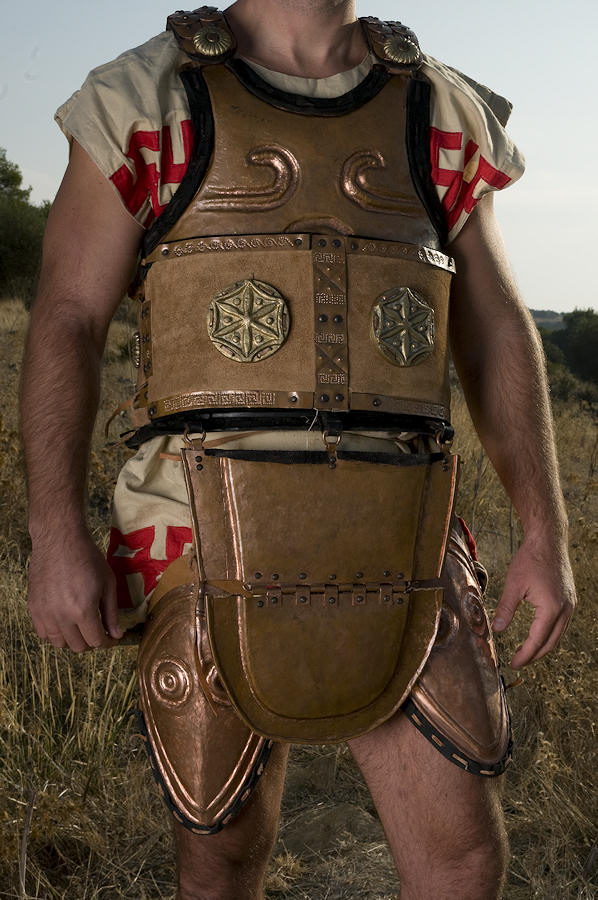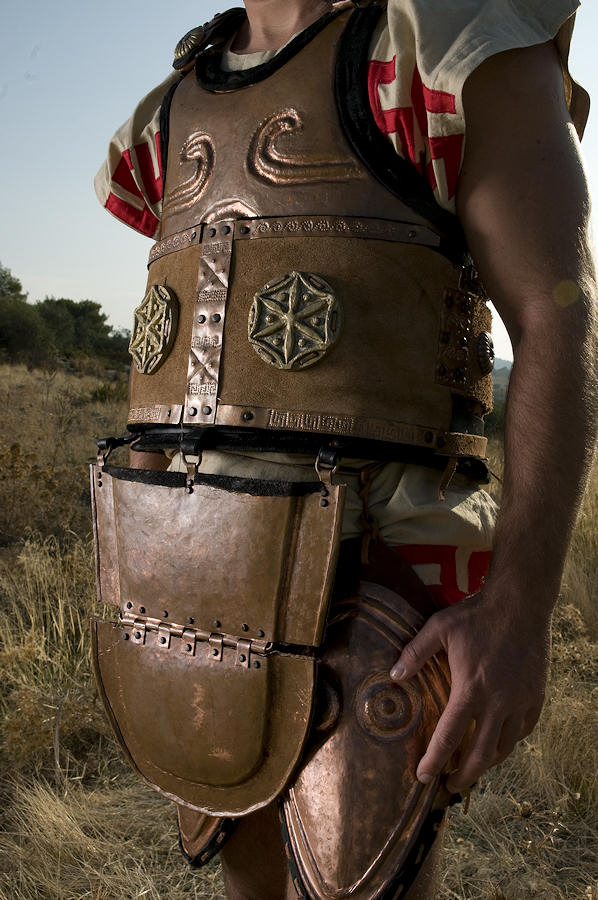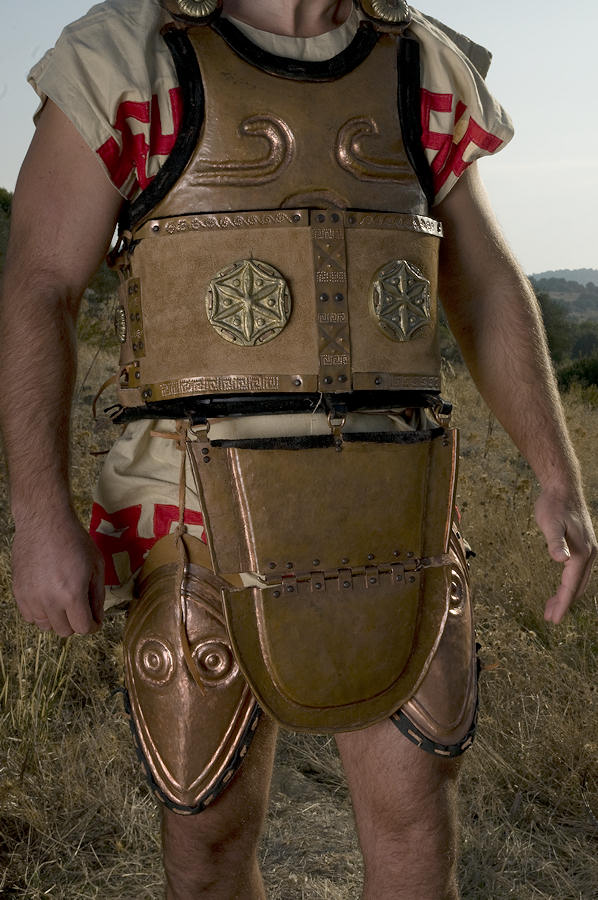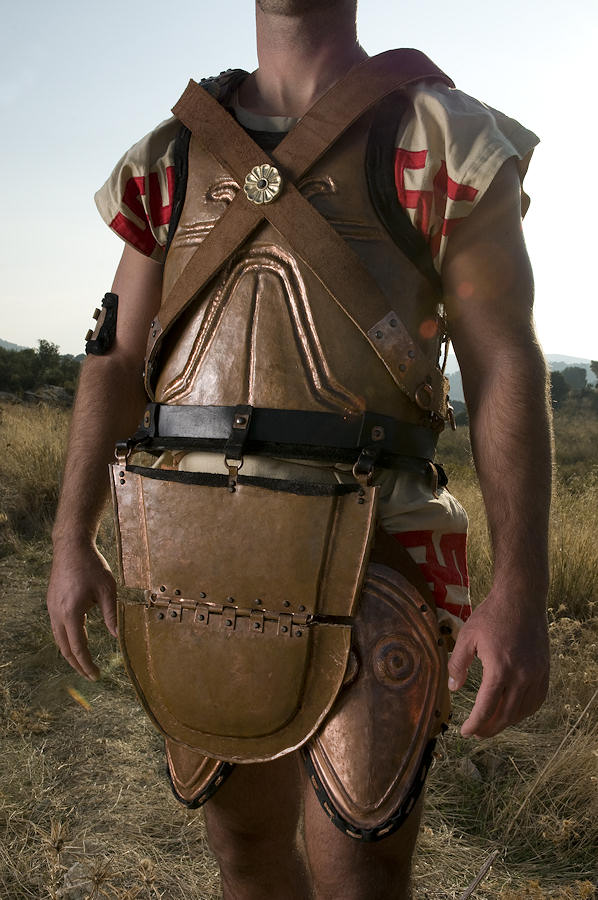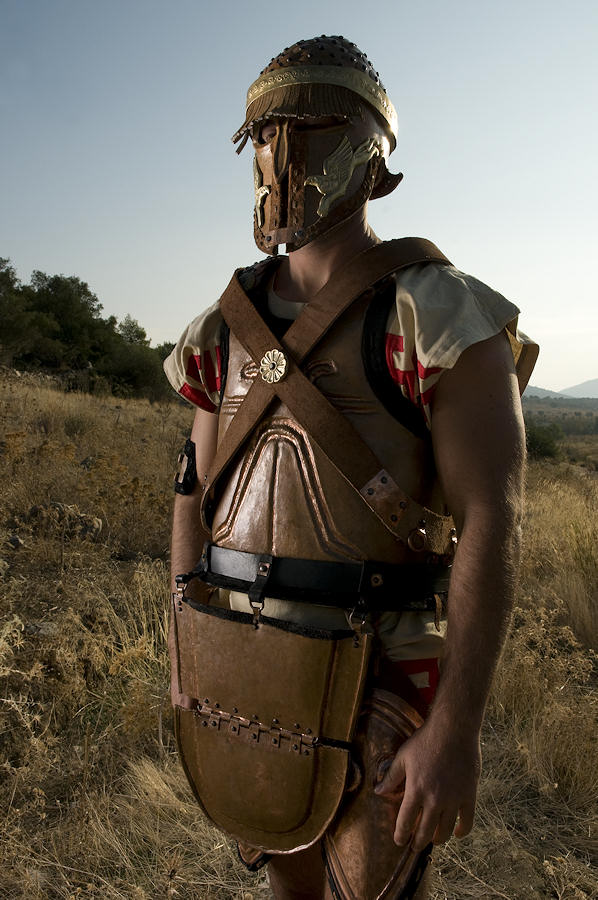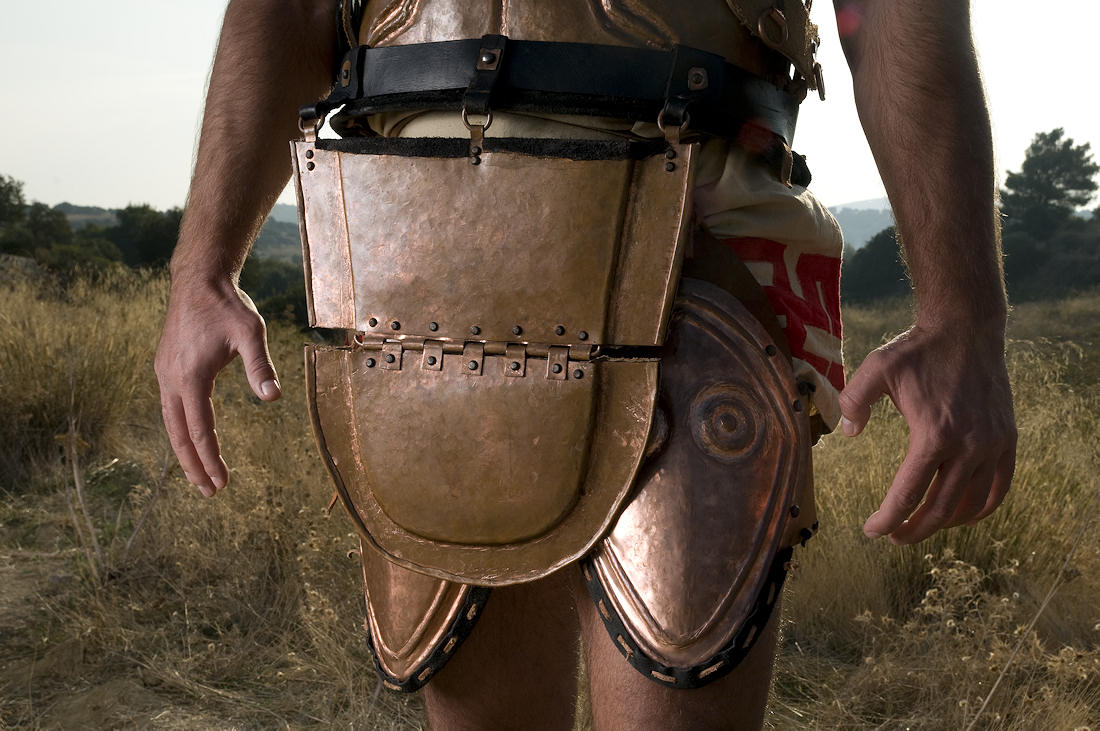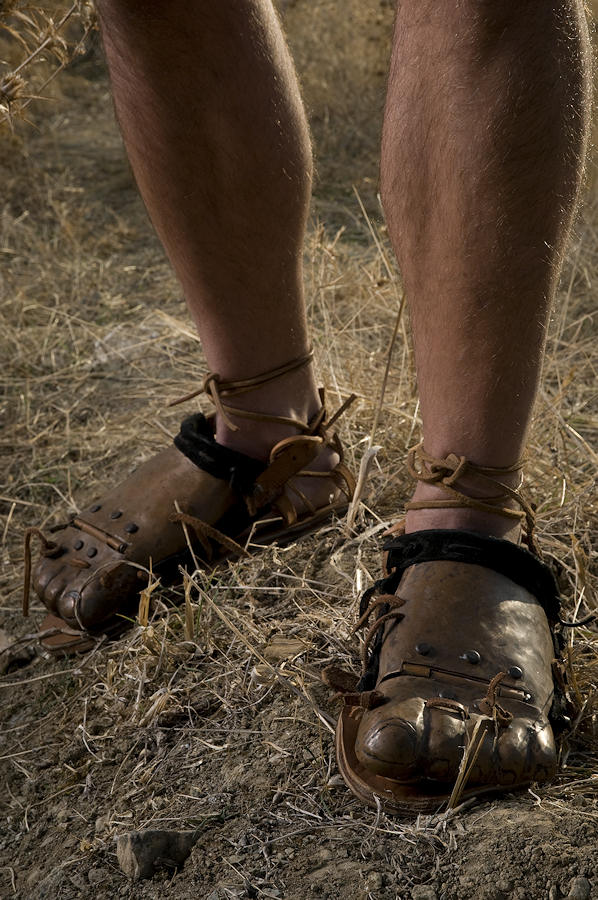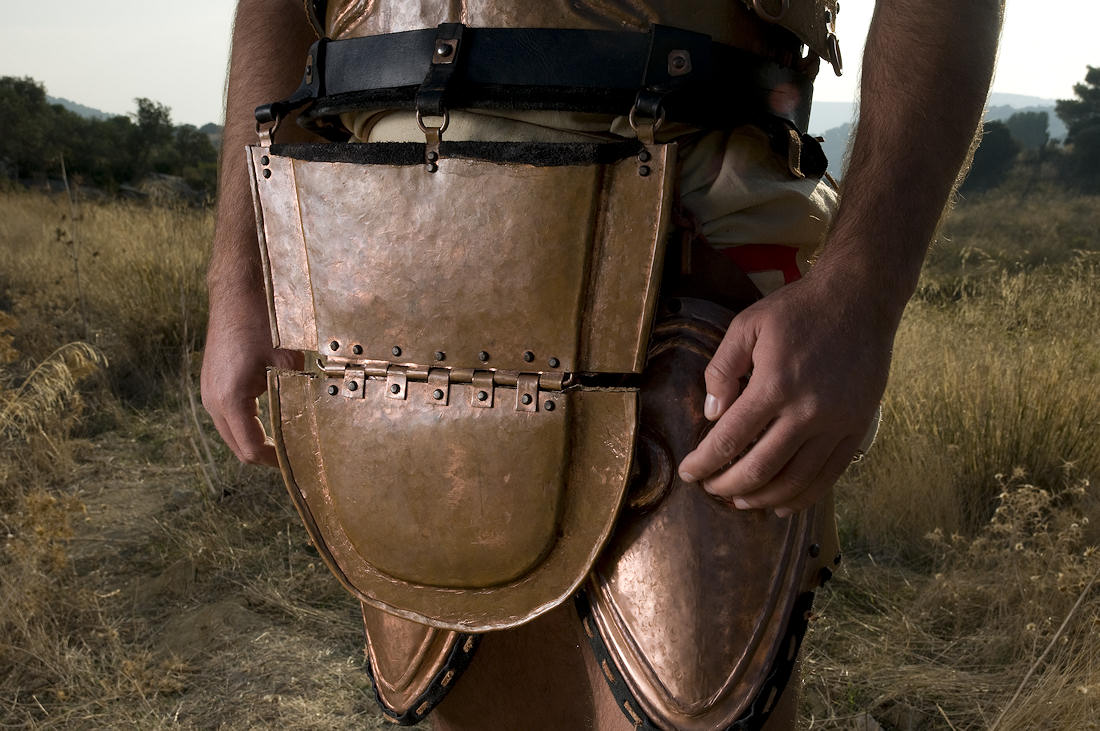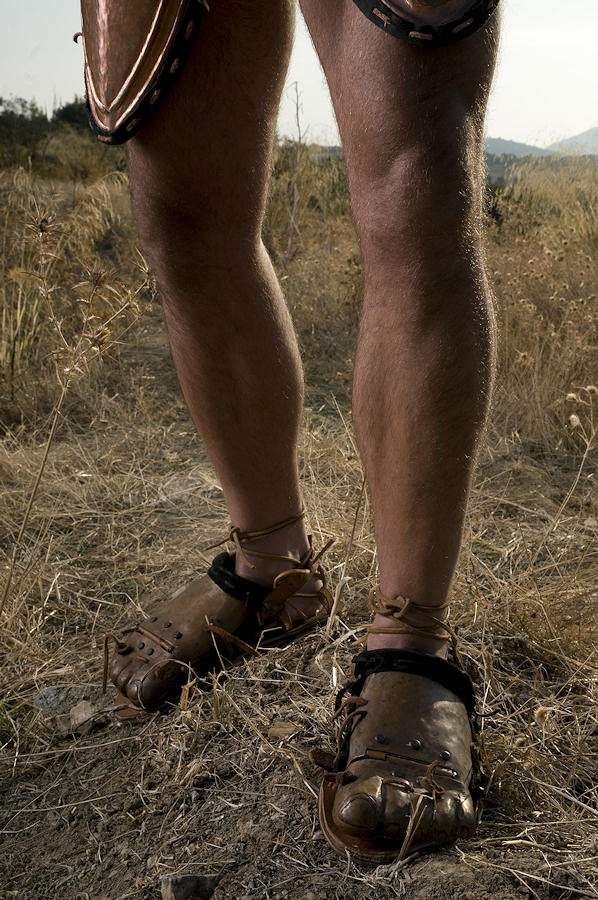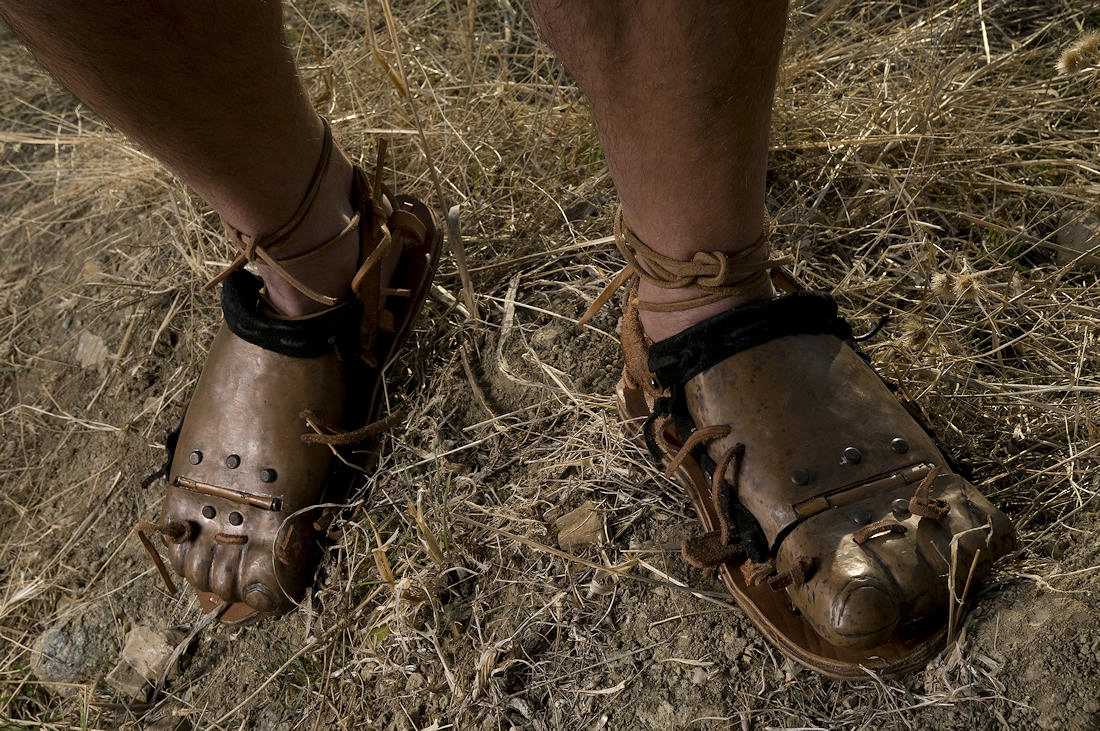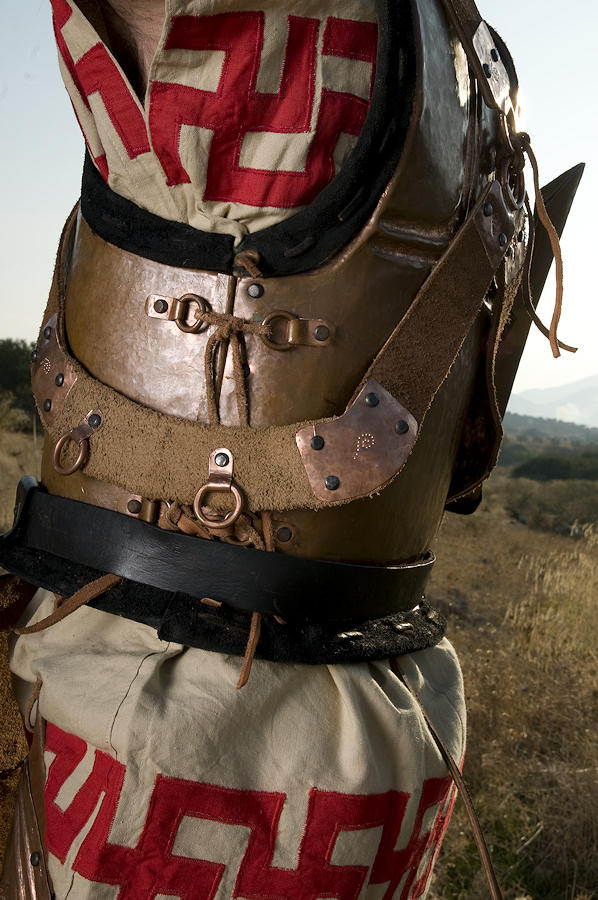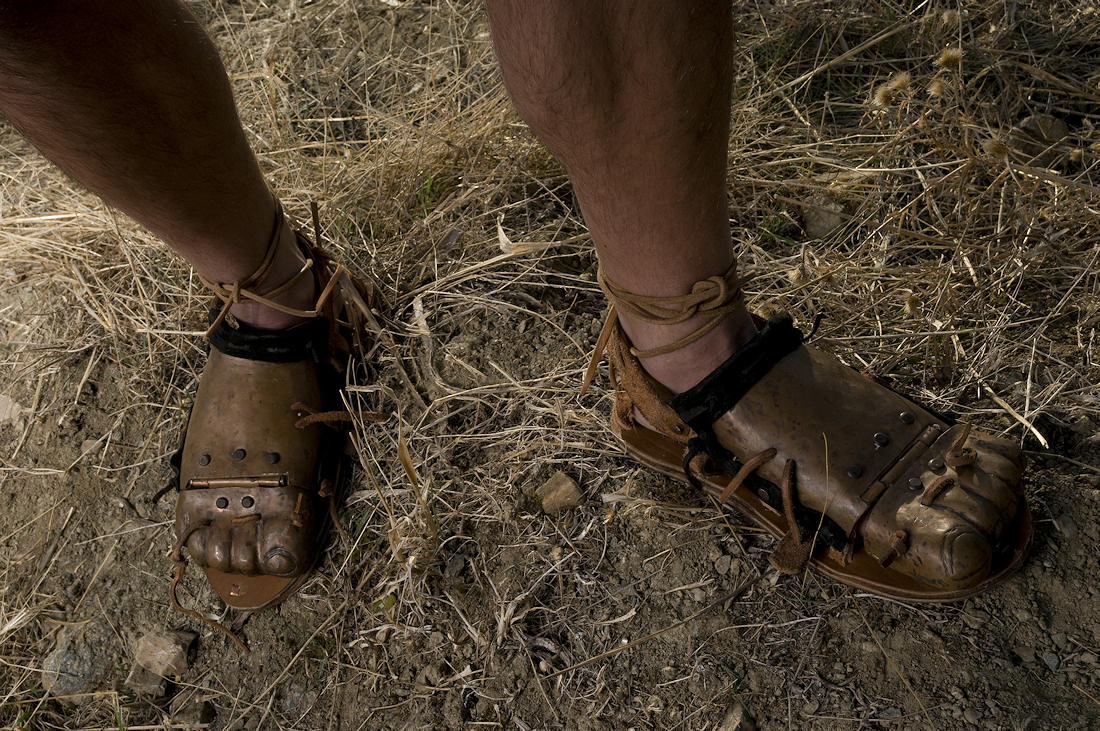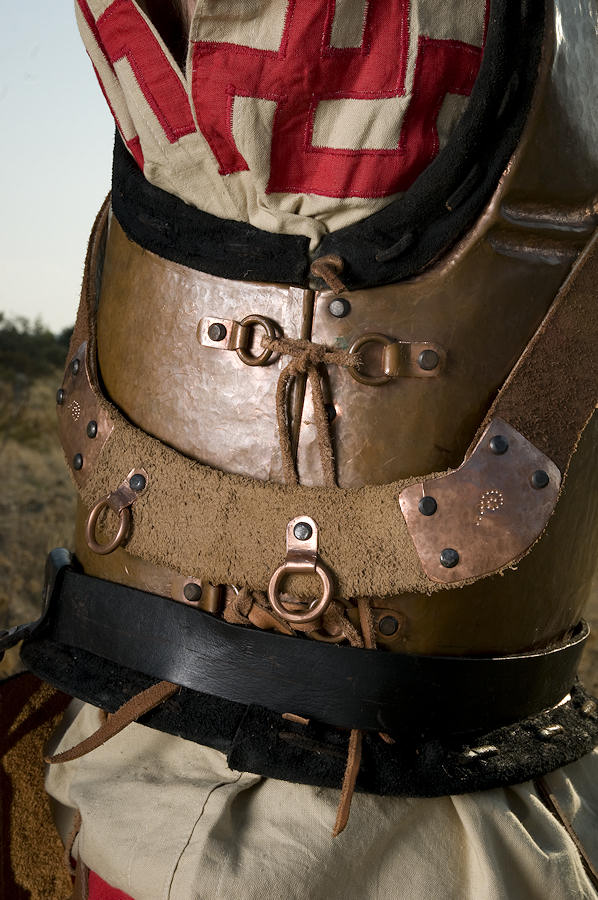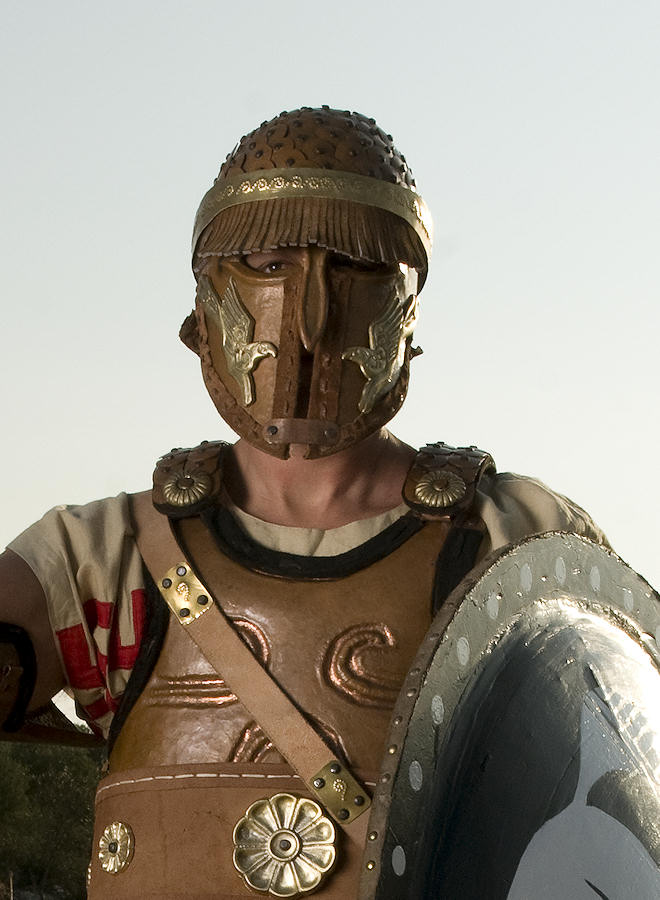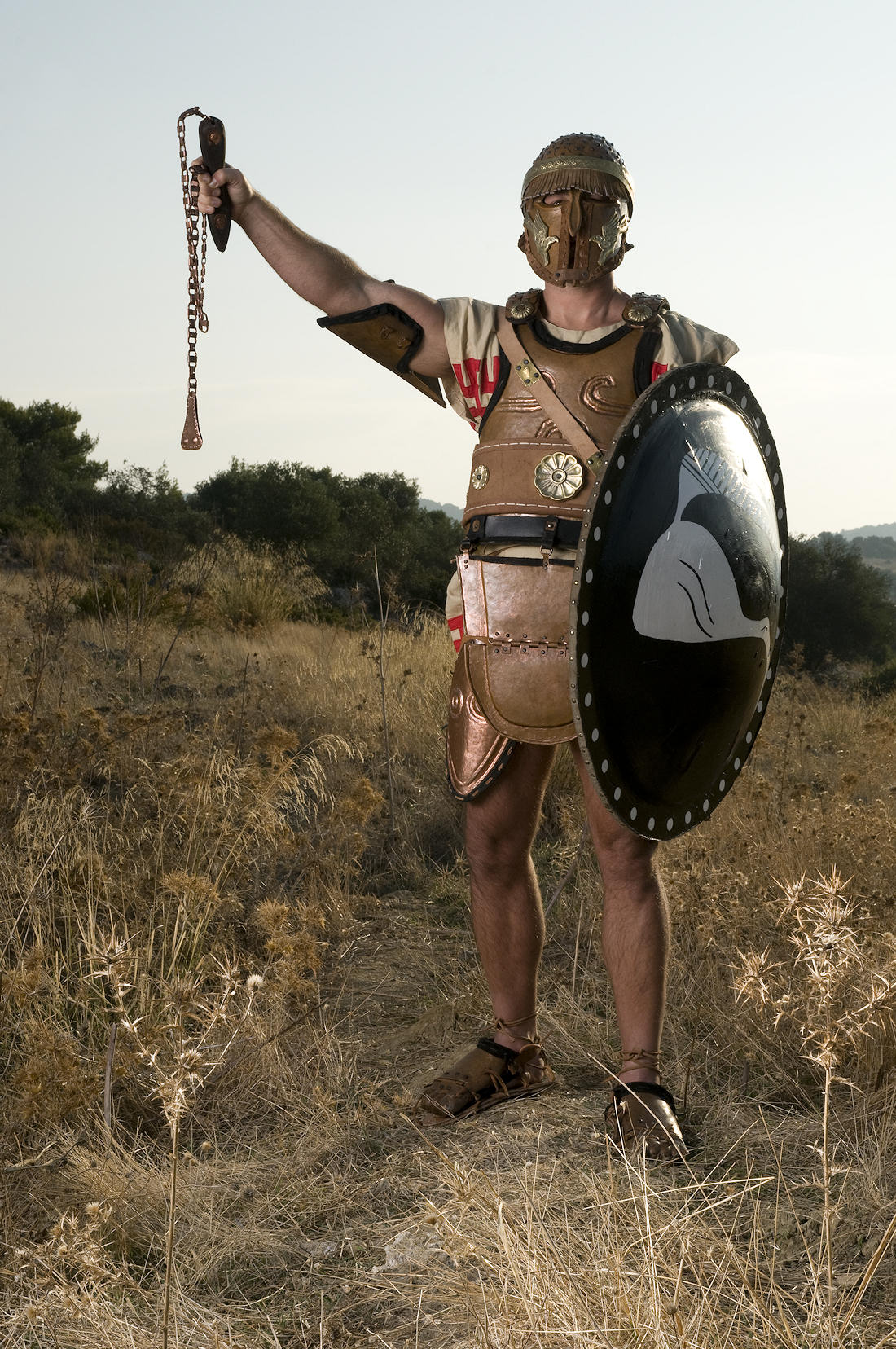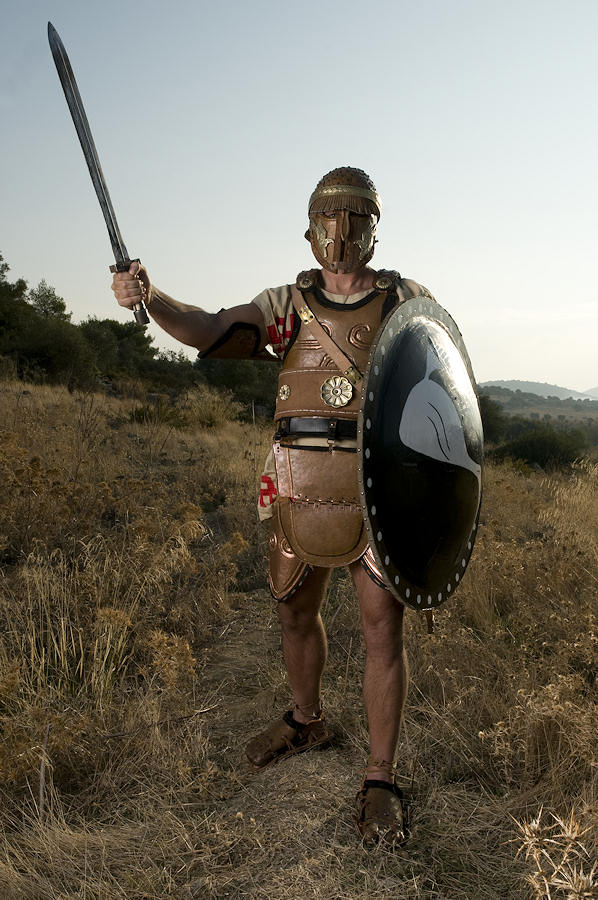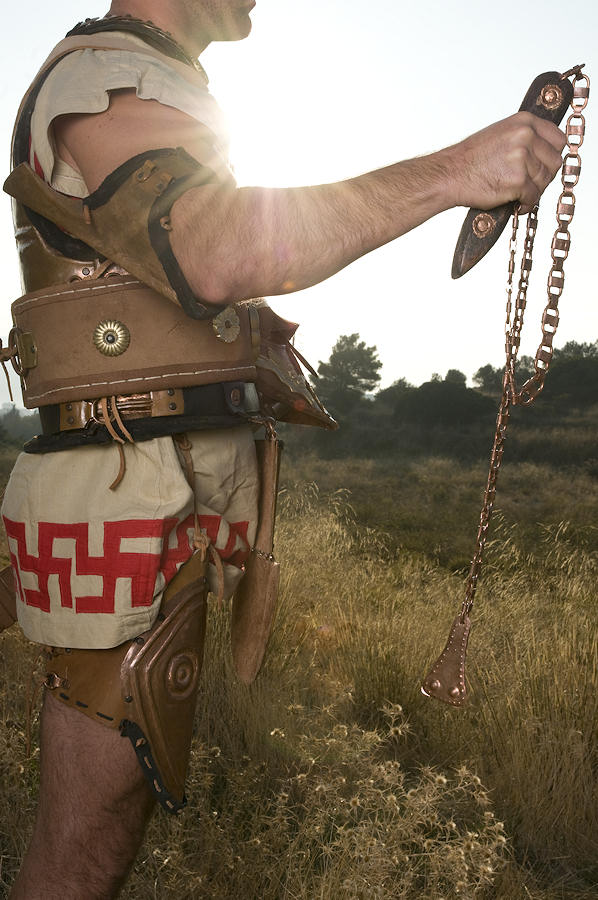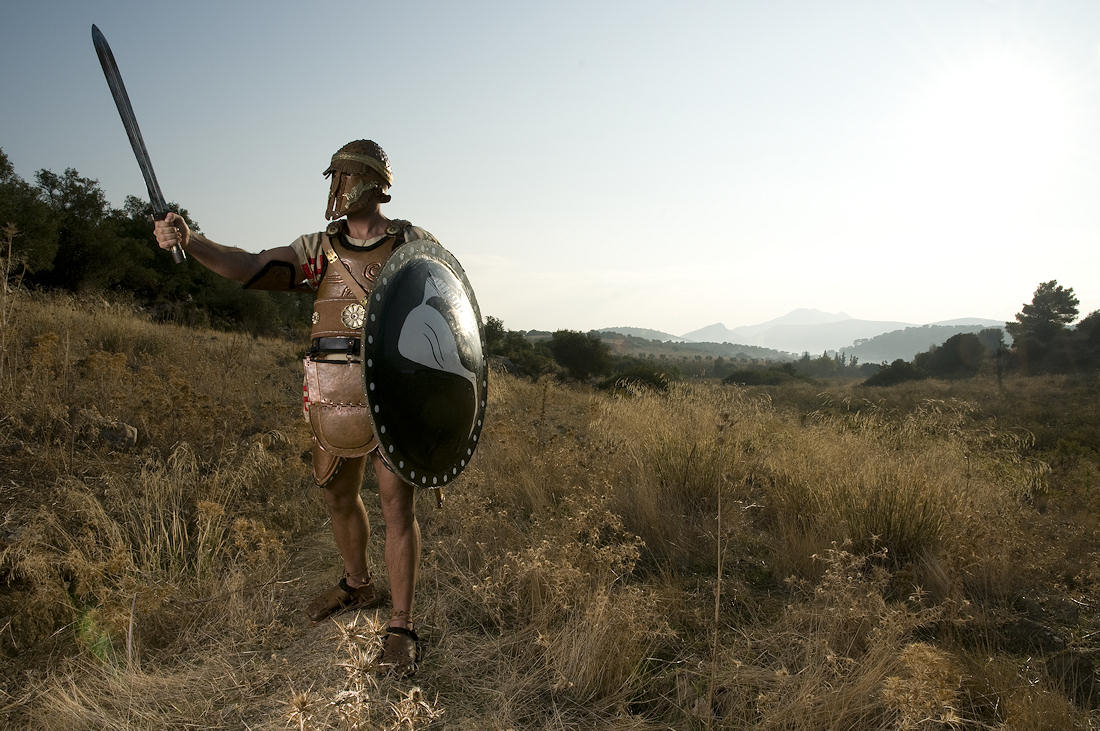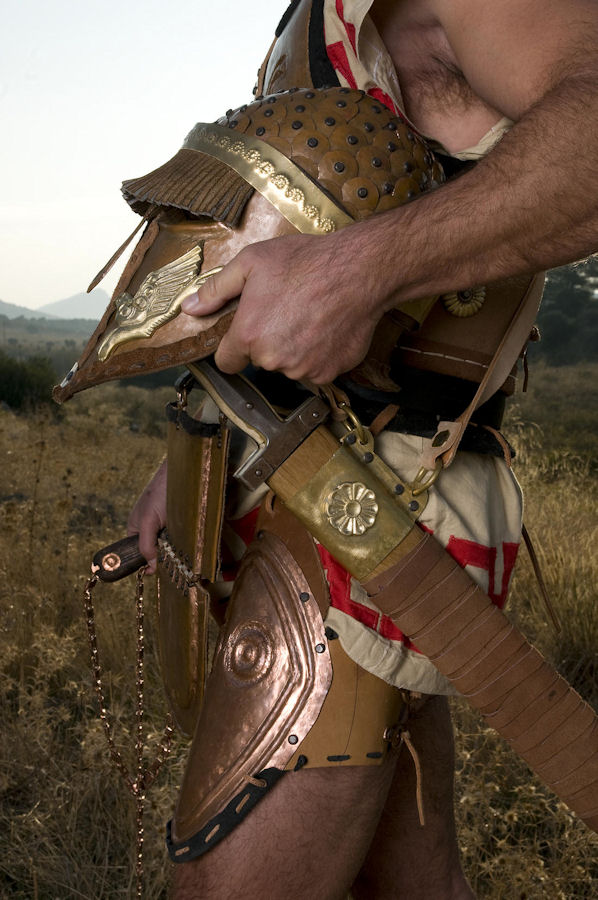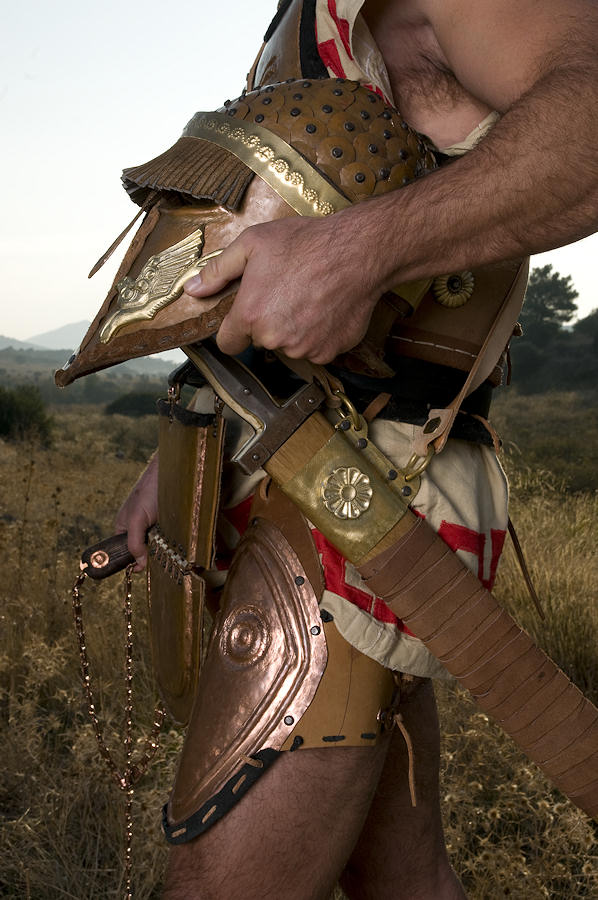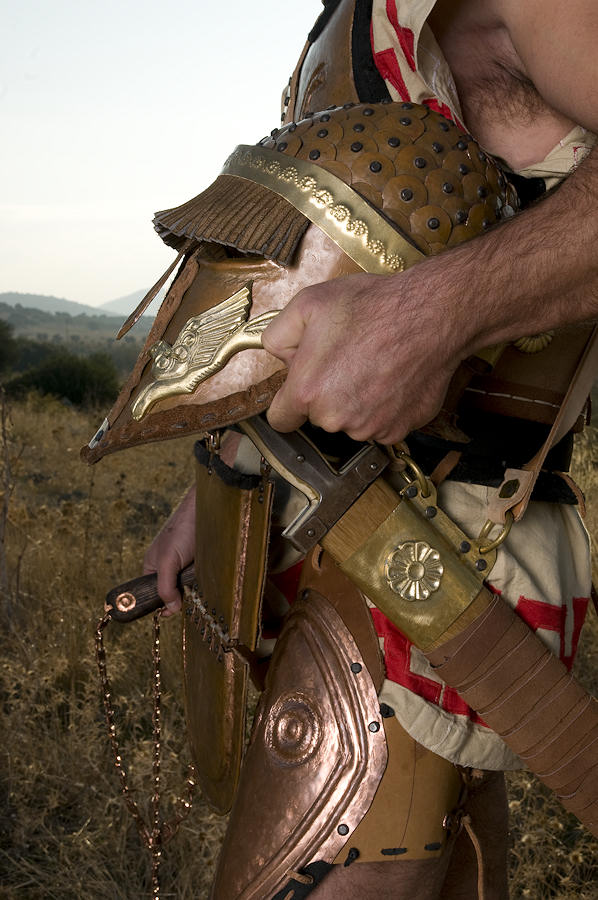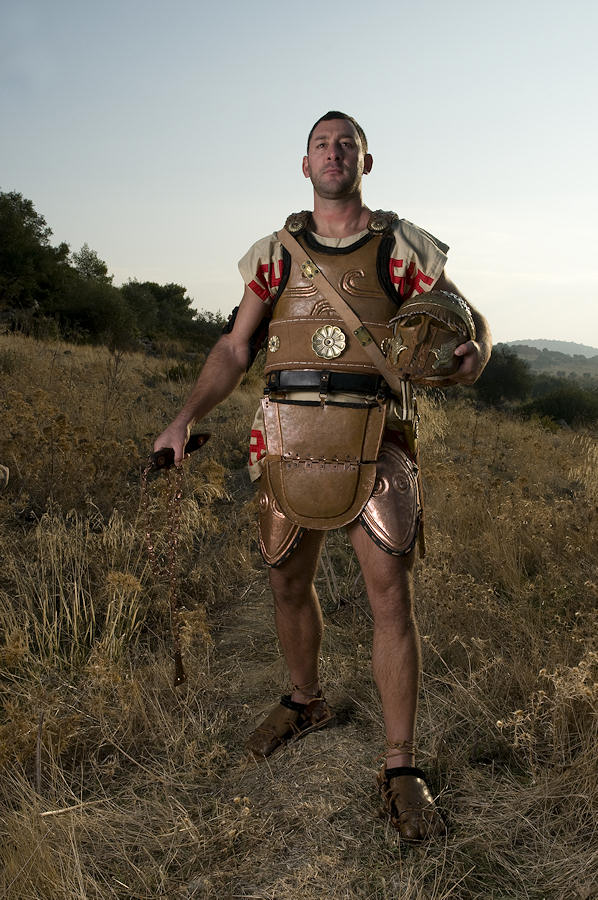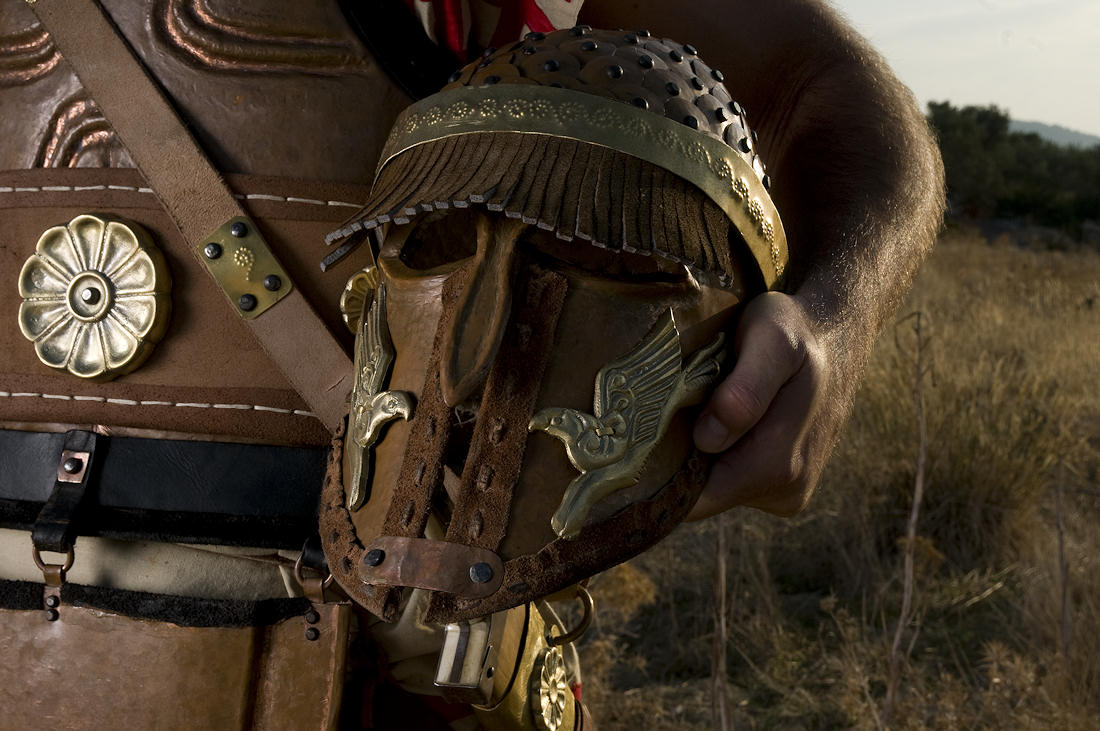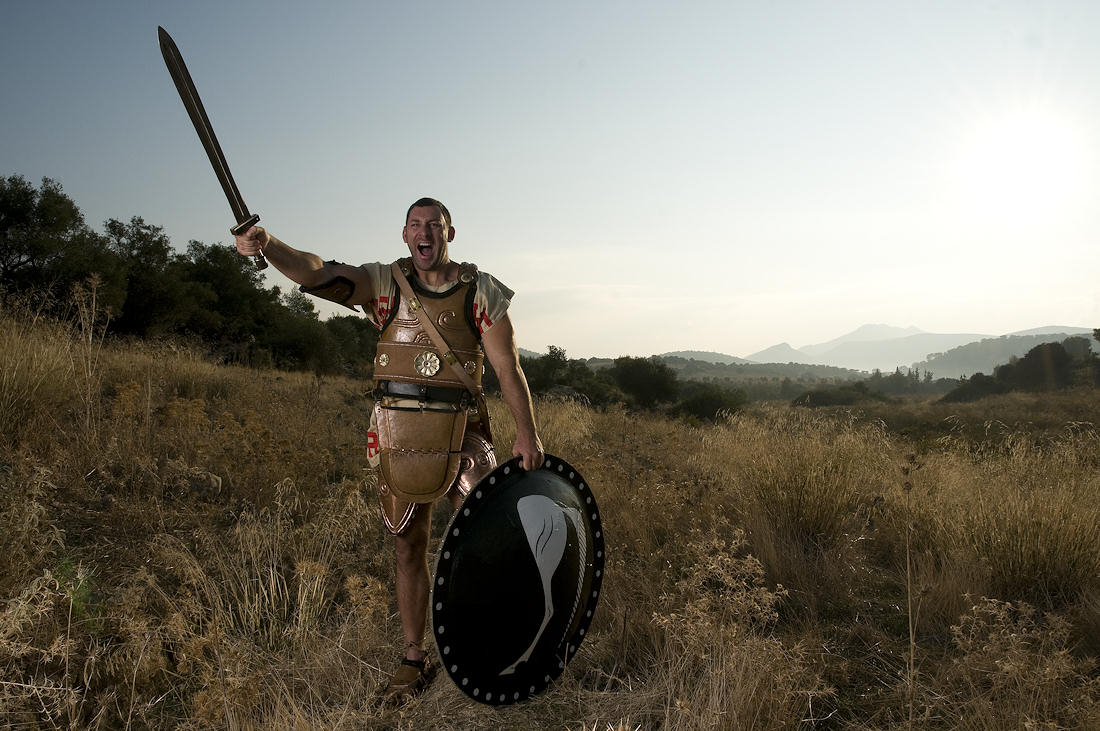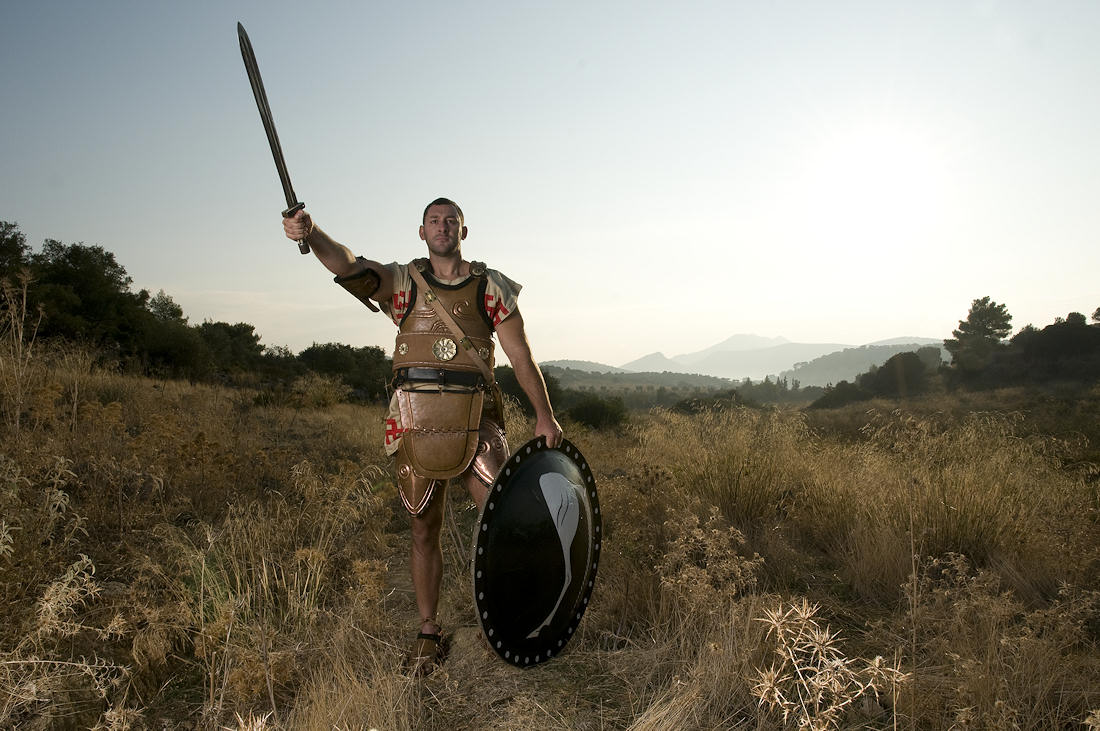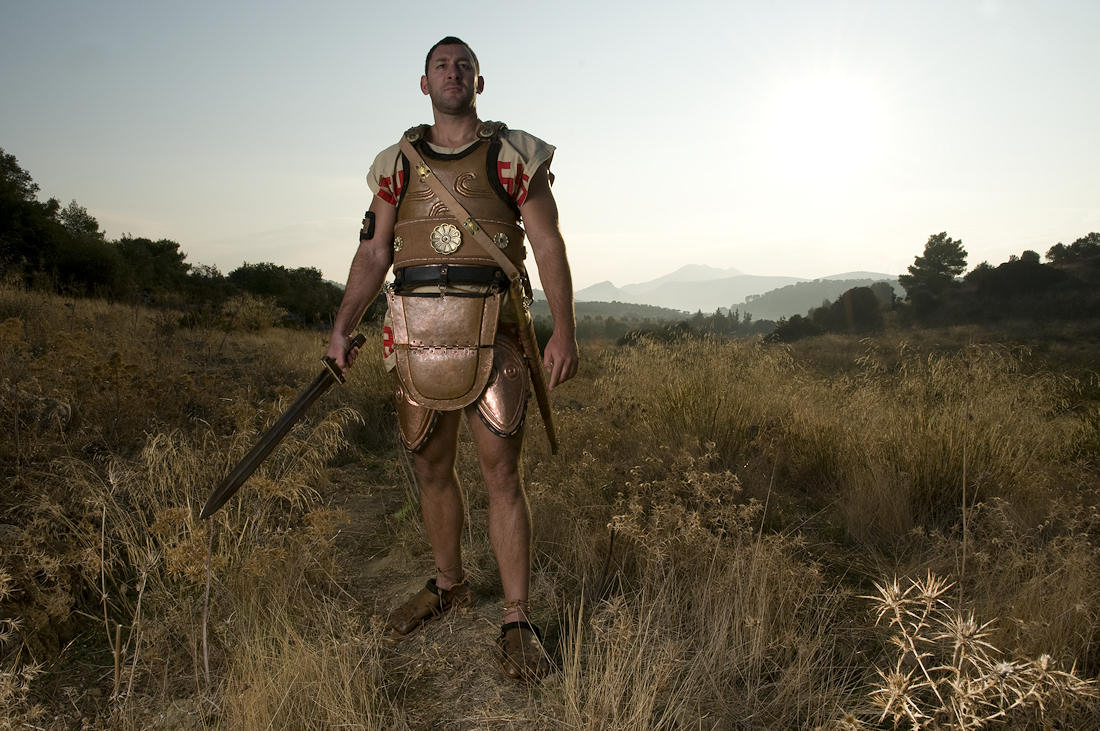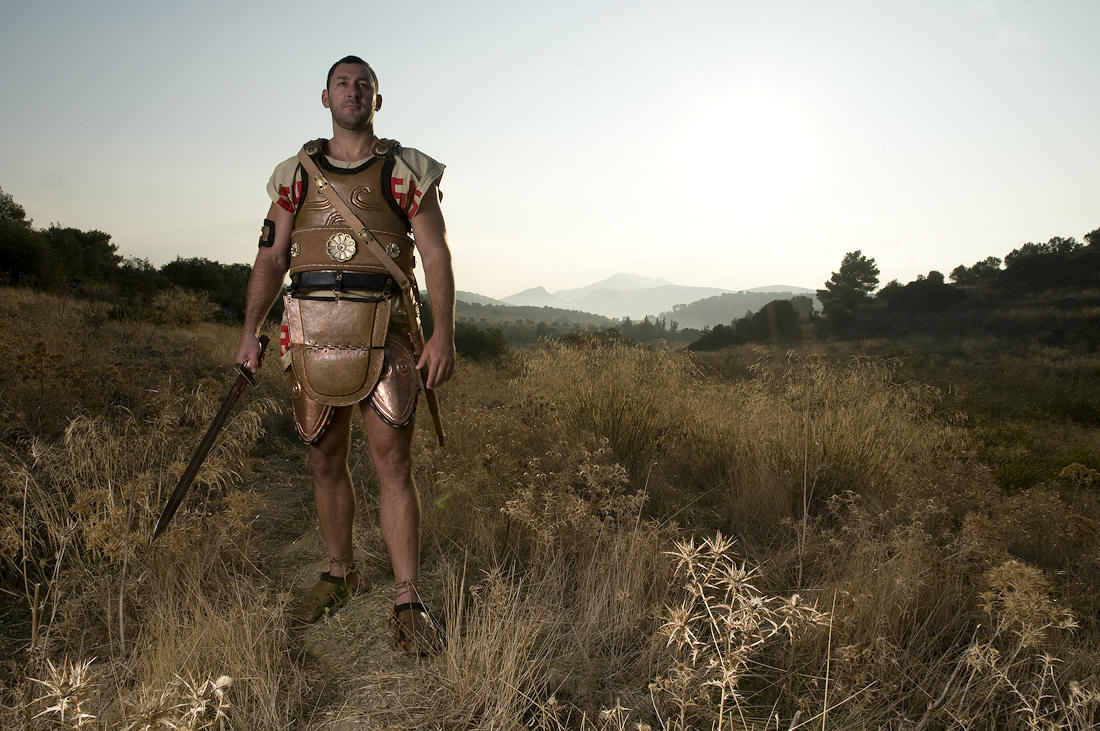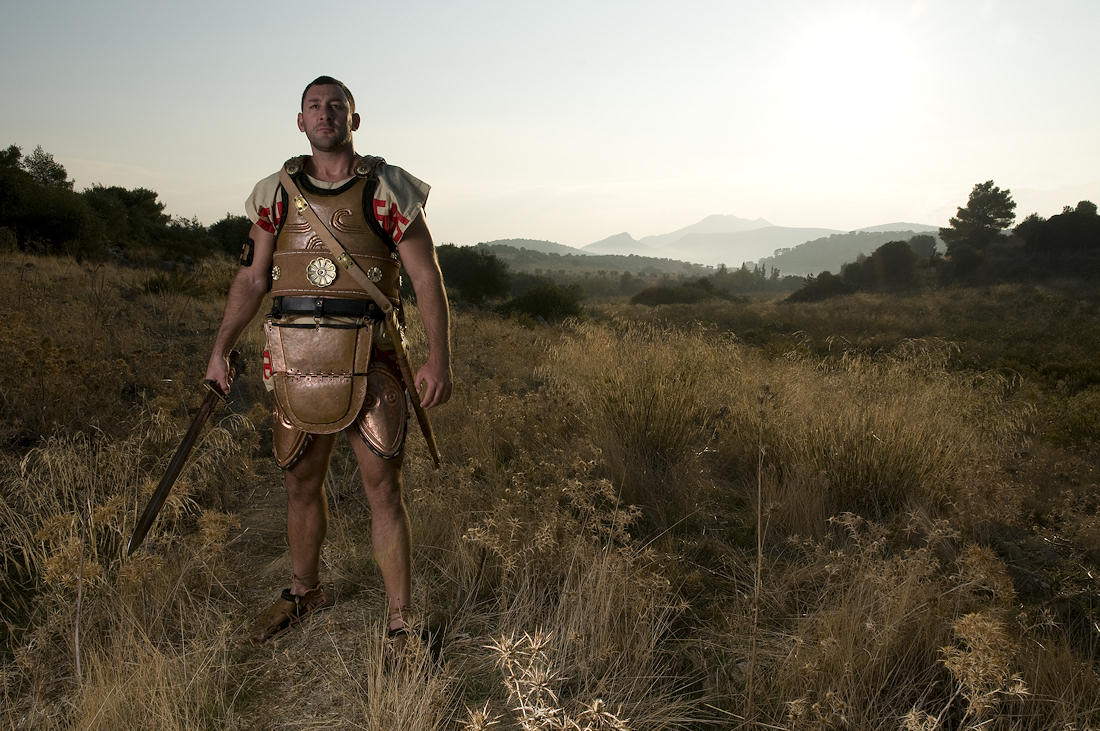Ancient Greek Armors
Heavy Armor Type of Archaic Era
6th B.C.

Heavily armored infantry hoplite of the 6th century B.C. The equipment follows the archaic manufacturing design and its completion makes exclusive use of copper and leather.
The Corinthian style helmet made by copper is composite and weights about 3 kg. The top shell is covered with copper scales and there is a leather visor over the eye openings providing shading. The bronze side-ornaments offer prestige and recognisability to the owner.
The bell-shaped thorax is made of copper and follows the standards of the archaic fashion. The reconstruction is based on archaeological findings of a thorax found in a tomb in Dalboki in the region of Stara Zagora, Bulgaria, dating from the 5th BC century.
The fastening mechanism consists of six lock points, two in the chest area and four in the sides, i.e. two pairs per side. The lower middle part of the bell-armor is attached with the help of a leather belt to the “mitre”, a heavy copper plate with contractile mechanism to ensure protection as well as freedom of movement for legs and groin. Around the abdomen area of the thorax, the Homeric “zoma” is fastened. Τhis is a thick leather belt (decorated or not) that offers additional protection while also serving as a sign of prestige and notable origin. In the pictures, we may see two types of luxury belts, with bronze rosettes dominating the decor.
As an alternative version of belts, a system of crossed baldrics envelops the thorax offering fastening points for accessories. The fastening of this leather layout is on the back side of the thorax achieved by a system of rings and laces. The right arm is protected by a bronze ‘sting’-shaped armband of 30 cm length. Despite its size, it allows the unrestricted movement of the hand at all angles. Field research conducted showed that this had been developed as accompanying equipment to bell-thorax type of body armor.
The cuisse follows the almond-shaped manufacturing design according to archaic standards and covers the thighs until the knees. Their vertical support is achieved by an under-armor suspension mechanism while the horizontal support by appropriate shaped straps fastened in the back side of the thighs. Components of exceptional artistic and engineering ingenuity, the sabetons protect the feet while the contractile mechanism they have allows free walking motion. They can be adjusted on both bare feet and sandals. The sandals are of open type, made of leather. Their leather sole has a thickness of 1 cm and its outer side has metal hobnails that increase the adhesion of the soldiers’ stride on the battlefield. The wooden sheath of the sword is hanging by a leather baldric to the left side of the soldier’s body. Its decoration includes a bronze rosette, an ornate wooden tip and a leather inner lining offering wood protection and better fit of the handle.
The hoplite shield is a wooden construction with a diameter of 90 cm and a weight of 7 kg, it carries a luxurious leather inner lining, a circular rope lattice system of eight points and a central fastening system of wrought bronze for the double-grip. The central arm grip is detachable for security reasons – its removal renders the use of the shield impossible.
On top of the sword, the hoplite brandishes a heavy copper whip of archaic style, a symbol of high social status and power.
